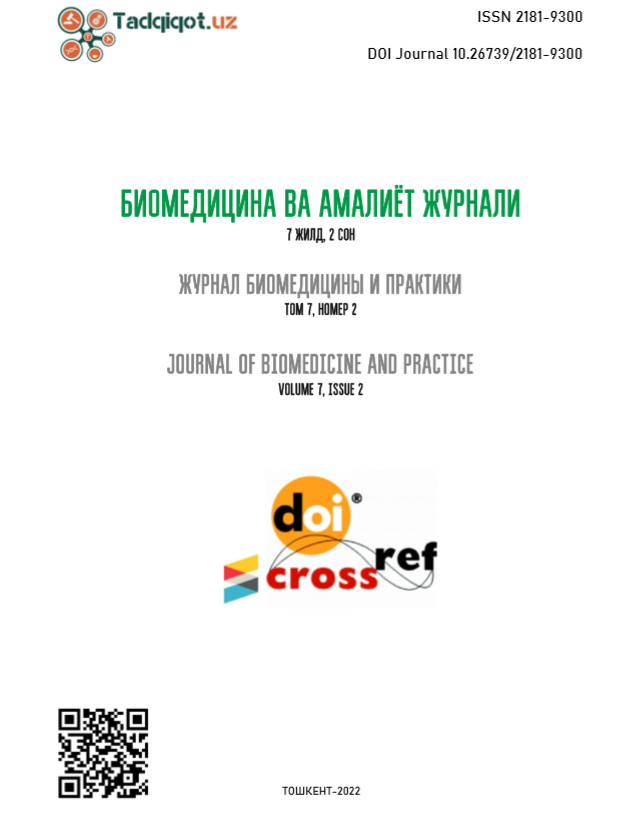EXPERIENCE OF APPLICATION OF HIGH-INTENSITY MAGNETOTHERAPY FOR KNEE JOINT INJURIES
Keywords:
high-intensity magnetotherapy, knee joint sprains, sports injuries, combatants, rehabilitation in sports.Abstract
Aim. Evaluation of the effectiveness of the method of high-intensity magnetic therapy for sprains of the knee ligaments in athletes.
Methods. We examined 26 athletes involved in martial arts - judo, taekwondo and karate with different sports qualifications, who showed signs of knee sprain of 1 and 2 degrees. The main group included 13 athletes whose comprehensive rehabilitation program included procedures for high-intensity magnetotherapy Super Inductive System (SIS) on the device BTL 6000. The control group consisted of 13 athletes whose rehabilitation program was carried out without the inclusion of high-intensity magnetic therapy.
Results. An analysis of the indicators of the KOOS subscales at the beginning of rehabilitation treatment showed that the minimum score was observed in terms of "symptoms" - 49.6±7.2 in the main group and 52.8±13.9 in the control group, which can be explained by the presence of a pronounced pain syndrome in knee joint injury in the examined athletes. Also, due to the pain syndrome, there was a low score on the subscales "quality of life" - 62.9±14.1 and "sports activity" - 64.2±19.7. Athletes have changed their daily activity to the least extent, as evidenced by a slight increase in this indicator.
Conclusion. A comparative analysis showed that when high-intensity magnetotherapy is introduced into the rehabilitation complex for combatants with knee joint problems, it leads to a quick and effective recovery, which can be seen from the dynamics of the indicators of the knee injury outcome scale - KOOS.
References
Бикташев М.Р., Стрижков А.Е., Морфофункциональные особенности спортсменов-единоборцев разного уровня спортивного мастерства: научное издание. / Морфология. - СПб, 2009. - Т.136 №4. - C. 20-21.
Перова Е.И. Концепция и исследования качества жизни в спортивной травматологии и ортопедии / Вестник спортивной науки. - 2006. - № 2. - С. 21-25.
Гладков В.Н. Некоторые особенности заболеваний, травм, перенапряжений и их профилактика в спорте высших достижений. - М.: Советский спорт, 2007. - 152 с.
Пак Е. А., Мавлянова З. Ф., Ким О. А. Показатели состояния сердечно-сосудистой системы у детей, занимающихся каратэ //Спортивная медицина: наука и практика. – 2016. – Т. 6. – №. 1. – С. 21-25.
Шарафова И. А., Ким О. А. Изменения показателей частоты сердечых сокращений у спортсменов-подростков, занимающихся таэквондо в условиях города Самарканда //Материалы XXIII съезда Физиологического общества им. ИП Павлова с международным участием. – 2017. – С. 2108-2109.
Roos E.M. Knee injury and osteoarthritis outcome score (KOOS) - validation of a Swedish version Scand / E.M. Roos [et al.] // J. Med. Sci. Sports. - 2018. -Vol. 8. - P. 439-446.
Hapa O., Wijdicks C.A., LaPrade R.F., Braman J.P. Out of the ring and into a sling: acute latissimus dorsi avulsion in a professional wrestler: a case report and review of the literature. Knee Surg Sports Traumatol Arthrosc. 2018 Dec; 16(12):1146–50. doi:10.1007/s00167-008-0625-8.
Боголюбов В.М. «Медицинская реабилитация» Москва., 2016, 3 тома - С. 150-170.
Мазур А.И., Пирогова Л.А. // Актуальные проблемы спортивной медицины и реабилитации: м-лы конф. (27-28 мая 2010 г.) - Гродно: ГрГМУ 2010. - С. 40.
Миронов С.П., Поляев Б.А., Макарова Г.А. Спортивная медицина. // Национальное руководство. 2012 г.
Боголюбов В.М., Понамарев Г.Н. «Частная физиотерапия» Издательство «Медицина», М. 2015г. - С. 597-618

